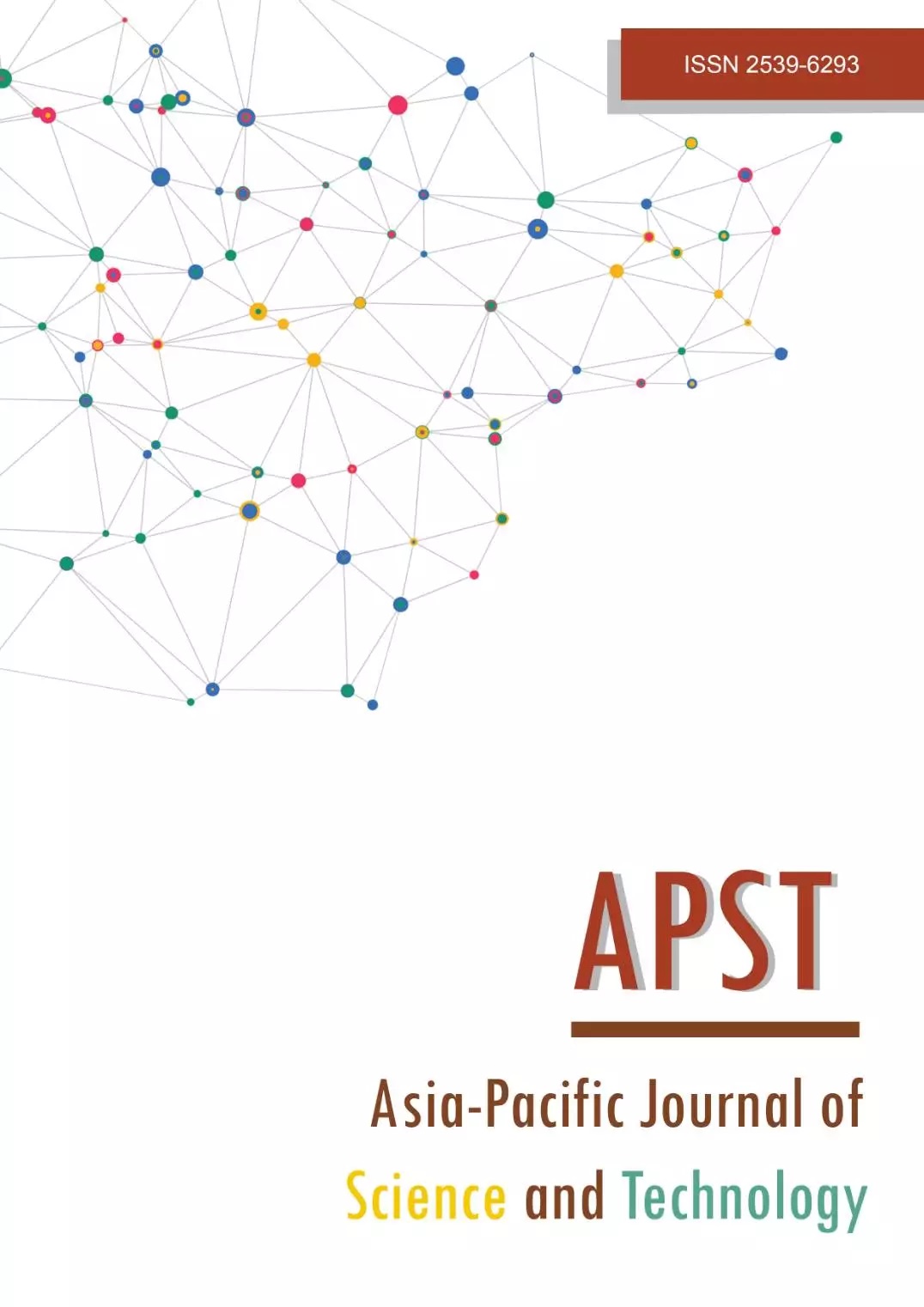Agricultural crop zoning with mixed integer programming for aromatic coconut in Ratchaburi Province
Main Article Content
Abstract
Nowadays, the main concern in agricultural production is to balance the demand and supply to avoid the supply-over-demand problem. Agricultural zoning is a preferred solution to the problem, allowing farmers and policymakers to choose the most suitable economic crop for a particular area. The land suitability, factory locations and distances, profits, and crop growth costs must be considered when choosing optimal areas. For optimization problems, Mixed Integer Programming (MIP) is one of the most common mathematical optimization tools. In this study, we employed a solver called the Gurobi optimizer to find the target areas for the given crop. In this multi-criteria optimization problem, the goal is to maximize the land suitability of the desired crop, maximize profit, minimize the switching between the current and the new crop, and minimize the distance from the areas to the nearest market. The total amount of crop production should not exceed the capacity of the factories and the market demand. We apply the models to the real-world problem by assuming that the desired crop is Sweet Young Coconut (Aromatic Coconut) in Ratchaburi province. Land suitability of crops, economic inputs, and market locations for this study are obtained from the Agri-Map: Agricultural Map for Adaptive Management. We test the efficiency of the models with two scenarios: with and without factory purchasing capacity limitation. The results show that the model with factory purchasing capacity constraints is applicable for choosing the most suitable target areas to balance the crop supply with the market demand.
Article Details

This work is licensed under a Creative Commons Attribution-NonCommercial-NoDerivatives 4.0 International License.
References
Boonyanam N. Agricultural zoning and policy conflict: Thailand’s experience. In: Loures LC, editor. Land Use - Assessing the Past, Envisioning the Future. London: IntechOpen; 2019. p. 53-71.
Moac.go.th. Agri-Map-Online System [Internet]. 2022 [cited 2022 Oct 25]. Available from: http://agri-map-online.moac.go.th/. (In Thai)
Ministy of Agriculture and Coorperatives. The twenty-year agriculture and cooperative strategy 2017-2036 [Internet]. Bangkok: Office of Agricultural Economics; 2017 [cited 2022 Oct 25]. Available from: https://www.oae.go.th/assets/portals/1/files/bapp/strategic20year_eng.pdf.
Asian and Pacific Farm Management Association (APFMA). Thailand agricultural Policies and Development Strategies [Internet]. Taipei: APFMA; 2019 [cited 2022 Oct 25]. Available from: https://ap.fftc.org.tw/article/1393.
Office of Agricultural Economics. The 5-year agriculture and cooperative strategy 2023-2027 [Internet]. Bangkok: Office of Agricultural Economics; 2021 [cited 2022 Oct 25]. Available from: https://www.oae.go.th/assets/portals/1/files/bapp/2565/moacplan2566-2570.pdf. (In Thai)
Land Development Department, Ministry of Agriculture and Cooperatives. Agri-Map [Internet]. Bangkok: Land Development Department; 2022 [cited 2022 Oct 25]. Available from: https://www.ldd.go.th/Agri-Map/Index.html. (In Thai)
Department of Agriculture. Knowledge management aromatic coconut [Internet]. Bangkok: Department of Agricuture; 2021 [cited 2022 Oct 25]. Available from: https://www.doa.go.th/hort/wp-content/uploads/2021/08/coconut.pdf. (In Thai)
Office of the Permanent Secretary for Agriculture and Cooperative Affairs Ratchaburi Province. Agricultural and cooperative development plan of Ratchaburi Province [Internet]. 2022 [cited 2022 Oct 25]. Available from: https://www.opsmoac.go.th/ratchaburi-strategic-files-441591791816. (In Thai)
Filippi C, Mansini R, Stevanato E. Mixed integer linear programming models for optimal crop selection. Comput Oper Res. 2017;81:26-39.
Maqrot S, de Givry S, Quesnel G, Tchamitchian M. A mixed integer programming reformulation of the mixed fruit-vegetable crop allocation problem. 30th International Conference on Industrial, Engineering and Other Applications of Applied Intelligent Systems; 2017 Jun 27-30; Arras, France. Cham: Springer; 2017. p. 237-250.
Gil AF, Sánchez MG, Castro C, Pérez-Alonso A. A mixed-integer linear programming model and a metaheuristic approach for the selection and allocation of land parcels problem. Int Trans Oper Res. 2023;30(4):1730-1754.
Limpianchob C. A mixed integer linear programming model for optimal production planning in tangerine supply chain. Kasetsart J (Nat Sci). 2015;49(6):1001-1011.
Ospina DY, Carravilla MA, Oliveira JF. A MIP model for production planning in the roasting coffee industry. In: Fonseca R, Weber GW, Telhada J, editors. Computational Management Science. Cham: Springer; 2016. p. 157-163.
Gurobi Optimization. Python API overview [Internet]. 2018 [cited 2022 Oct 25]. Available from: https://www.gurobi.com/documentation/9.5/refman/py_python_api_overview.html.
Department of Industrial Works (DIW), Thailand. Download factory data (Excel) [Internet]. 2022 [cited 2022 Oct 25]. Available from: http://userdb.diw.go.th/factoryPublic/tumbol.asp. (In Thai)
Wikipedia. Haversine formula [Internet]. 2022 [cited 2022 Oct 25]. Available from: https://en.wikipedia.org/wiki/Haversine_formula.
Food and Agriculture Organization of the United Nations (FAO). Step 5. Evaluate land suitability [Internet]. 2022 [cited 2022 Oct 25]. Available from: https://www.fao.org/3/t0715e/t0715e05.htm.
Han J, Kamber M, Pei J. Data mining: Concepts and techniques. 3rd ed. Waltham: Morgan Kaufmann; 2012.


